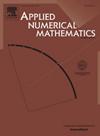由零自相关序列构建的计算机实验正交设计
IF 2.2
2区 数学
Q1 MATHEMATICS, APPLIED
引用次数: 0
摘要
计算机实验设计是实验设计的重要组成部分。在物理实验成本高、耗时长的情况下,利用计算机进行实验是近年来备受关注的问题。本文提出了一种生成多因素和对称运行的计算机实验的方法。这些设计适合于计算机实验,并使用具有零自相关函数的已知序列,如t序列、碱基序列、正态序列等。结果似乎是令人鼓舞的,因为该方法可以将已知序列转换为计算机实验的设计,而无需计算机搜索。生成的设计具有一些良好的特性,包括其运行的对称性,这使得所有偶数阶效应与主效应正交。本文章由计算机程序翻译,如有差异,请以英文原文为准。
Orthogonal designs for computer experiments constructed from sequences with zero autocorrelation
Designs for computer experiments constitute an important class of experimental designs. Computer experiments are used when the physical experiments are expensive or time-consuming and attracted a lot of attention in recent years. In this paper, we proposed a method for generating computer experiments with many factors and symmetric runs. These designs are suitable for computer experiments and are constructed using known sequences with zero autocorrelation function, such as T-sequences, Bases sequences, Normal sequences, and other. The results appear to be encouraging as the methodologies can transform the known sequences into designs for computer experiments without the need for a computer search. The generated designs have some favorable properties, including the symmetry in their runs which results in all the even orders effects being orthogonal to the main effects.
求助全文
通过发布文献求助,成功后即可免费获取论文全文。
去求助
来源期刊

Applied Numerical Mathematics
数学-应用数学
CiteScore
5.60
自引率
7.10%
发文量
225
审稿时长
7.2 months
期刊介绍:
The purpose of the journal is to provide a forum for the publication of high quality research and tutorial papers in computational mathematics. In addition to the traditional issues and problems in numerical analysis, the journal also publishes papers describing relevant applications in such fields as physics, fluid dynamics, engineering and other branches of applied science with a computational mathematics component. The journal strives to be flexible in the type of papers it publishes and their format. Equally desirable are:
(i) Full papers, which should be complete and relatively self-contained original contributions with an introduction that can be understood by the broad computational mathematics community. Both rigorous and heuristic styles are acceptable. Of particular interest are papers about new areas of research, in which other than strictly mathematical arguments may be important in establishing a basis for further developments.
(ii) Tutorial review papers, covering some of the important issues in Numerical Mathematics, Scientific Computing and their Applications. The journal will occasionally publish contributions which are larger than the usual format for regular papers.
(iii) Short notes, which present specific new results and techniques in a brief communication.
 求助内容:
求助内容: 应助结果提醒方式:
应助结果提醒方式:


